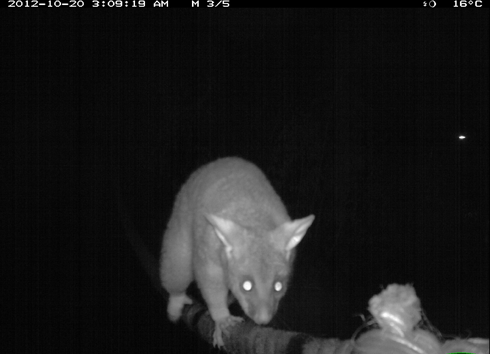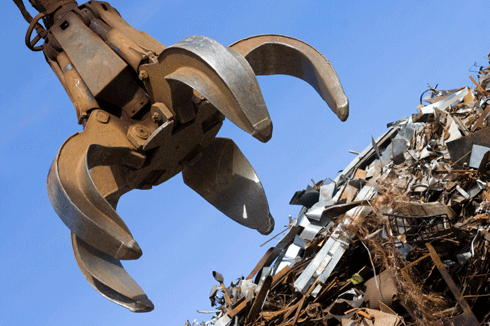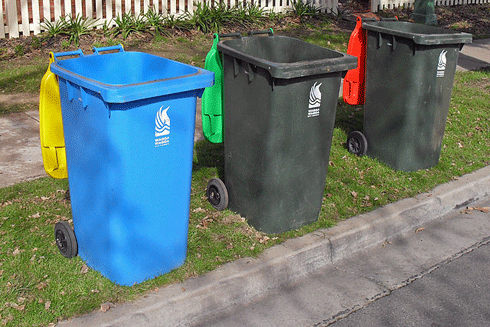
|
Published: 30 January 2013
Improving road safety for Australia’s high-flyers
Roads pose many risks to wildlife – from preventing or curtailing their movement, to causing death or serious injury. Genetic evidence warns us that in many areas, these risks could lead to the local extinction of many species. Given the number of major roads being built or enlarged as road authorities try to accommodate ever-increasing volumes of traffic, the problem of wildlife on roads is set to worsen.
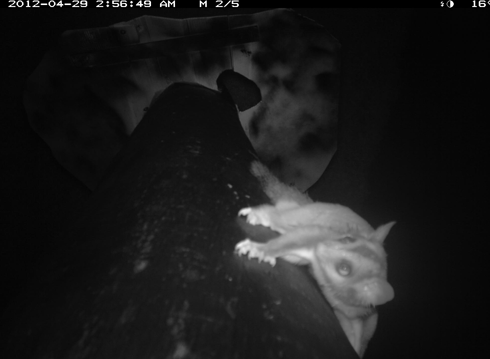
|
|
A squirrel glider ascending a roadside ‘glide’ pole installed by Brisbane City Council at Scrub Road. Credit:
B Taylor/R Goldingay
|
In addition to limiting wildlife movement, roads exact a dreadful toll in the form of road kill. In south-east Queensland, for example, hundreds of koalas are killed on roads each year; in north-east New South Wales, the figure is around 50 koalas per year.
In the leafier suburbs of Sydney, hundreds of common ringtail possums and common brushtail possums are killed on roads each year. The death or injury of these animals is a serious animal welfare issue that is largely unrecognised by anyone other than the innumerable wildlife carers and pro bono working vets who tend to these animals.
But, koalas and possums are just a few of the animals flattened on our roads each year. Many other species are on the list, including several species of endangered frog. So, what can we do about it?
Artificial structures designed to help animals cross under or over roads are becoming more common. Under-road structures range from modified drainage culverts to large, dedicated wildlife underpasses. Over-road structures include various kinds of land bridges that range from 10–800 metres wide and are covered in vegetation. Land bridges are common in Europe, where they enable large mammals, such as deer, to cross highways and prevent serious traffic accidents. Australia has three such structures in New South Wales and three in Queensland, including one just south of Brisbane. But, at a cost of more than AU$1 million, these structures are expensive, leading many to question their relative benefit.
Arboreal mammals are not well served by underpasses and land bridges. While some species may be reluctant to come down to the ground, others – such as koalas and possums – may not be fast enough to avoid ending up as road kill when crossing roads on the ground. In recent years, two new road-crossing structures have been installed for this wildlife group: canopy rope bridges for climbing species, and tall wooden poles for gliding species.
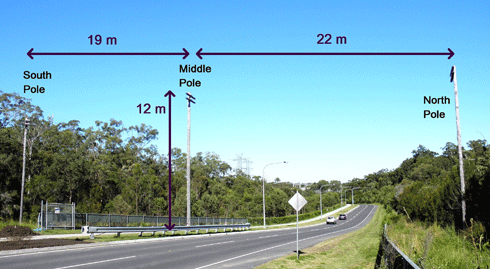
|
|
Design of the roadside glide poles installed by Brisbane City Council at Scrub Road. Credit:
B Taylor/R Goldingay
|
Canopy rope bridges were first trialled in North Queensland by Nigel Weston and his colleagues from James Cook University. They found that all three rainforest ringtail possum species they hoped would use their rope bridges did so, as well as six other mammal species, including Lumholtz’s tree kangaroo. In New South Wales, we have detected five species of arboreal mammal – including three gliding species – on rope bridges that span the Pacific Highway.
We recently published studies describing the success of tall wooden poles in helping squirrel gliders cross roads. In one study, glide poles were installed across two wildlife land bridges in Brisbane. Using motion-activated infra-red cameras, we observed squirrel gliders crossing the land bridge, and therefore the road, at one location once every four nights.
The glide poles on the second land bridge were connected by a rope to form a rudimentary rope bridge. Our camera monitoring revealed that squirrel gliders and ringtail possums used the rope to cross the road about once a week, with brushtail possums crossing once every two weeks.
When we investigated two vegetated land bridges in New South Wales that did not have tall wooden poles, we found no evidence that gliders (in this case, sugar gliders) used the vegetation to move across the bridges.
Discovering that squirrel gliders will cross a road using glide poles installed on a land bridge is important. But, will they use roadside glide poles to glide directly across a road?
To answer this question, Brisbane City Council installed roadside glide poles on a new section of road south of the city. Eleven months of monitoring with cameras provided us with crucial evidence that squirrel gliders regularly used the poles to cross the road.
Future research will focus on whether other gliding mammal species will use similar poles across a range of locations. For example, glide poles are now being incorporated in many new road projects, from the Oxley Highway at Port Macquarie – where 25-metre-high poles have been installed for the vulnerable yellow-bellied glider – to the Hume Highway, south of Canberra, where poles have been installed for squirrel gliders. Poles have also been installed for the endangered mahogany glider in North Queensland.
The good news is that the cost of these structures for arboreal mammals comes at a fraction of the cost of underpasses and land-bridges. Plus, installation can happen at any time during or after road construction. Consequently, we recommend that glide poles be retrofitted across existing roads wherever a need is identified.
For example, we recently conducted simulation modelling of a local squirrel glider population that has been fragmented by the Logan and Gateway Motorways south-west of Brisbane. The results revealed the local population is likely to become extinct without structures to help them cross these major roads. Thus, retrofitting of crossing structures will be critical to the survival of squirrel gliders in this landscape.
Although further research is required to improve the design and installation of rope bridges and glide poles, recent evidence of their value should lead to their wider deployment, including along existing roads.
Dr Ross Goldingay is Associate Professor in the School of Environment, Science & Engineering at Southern Cross University, and is currently the editor of Australian Mammalogy, the journal of the Australian Mammal Society. Dr Brendan Taylor is a post-doctoral fellow in the School of Environment, Science & Engineering at Southern Cross University. Ross and Brendan have been studying road impacts on wildlife and their mitigation for more than 10 years.
More information
Goldingay RL, Rohweder D and Taylor BD (in press). Will arboreal mammals use rope-bridges across a highway in eastern Australia? Australian Mammalogy (online early)
Taylor BD and Goldingay RL (in press). Squirrel gliders use road-side glide poles to cross a road gap. Australian Mammalogy (online early)
Taylor BD and Goldingay RL (2012). Restoring connectivity in landscapes fragmented by major roads: a case study using wooden poles as ‘stepping-stones’ for gliding mammals. Restoration Ecology 20, 671–678.
Weston N, Goosem M, Marsh H, Cohen M and Wilson R (2011). Using canopy bridges to link habitat for arboreal mammals: successful trials in the wet tropics of Queensland. Australian Mammalogy 33, 93–105.


